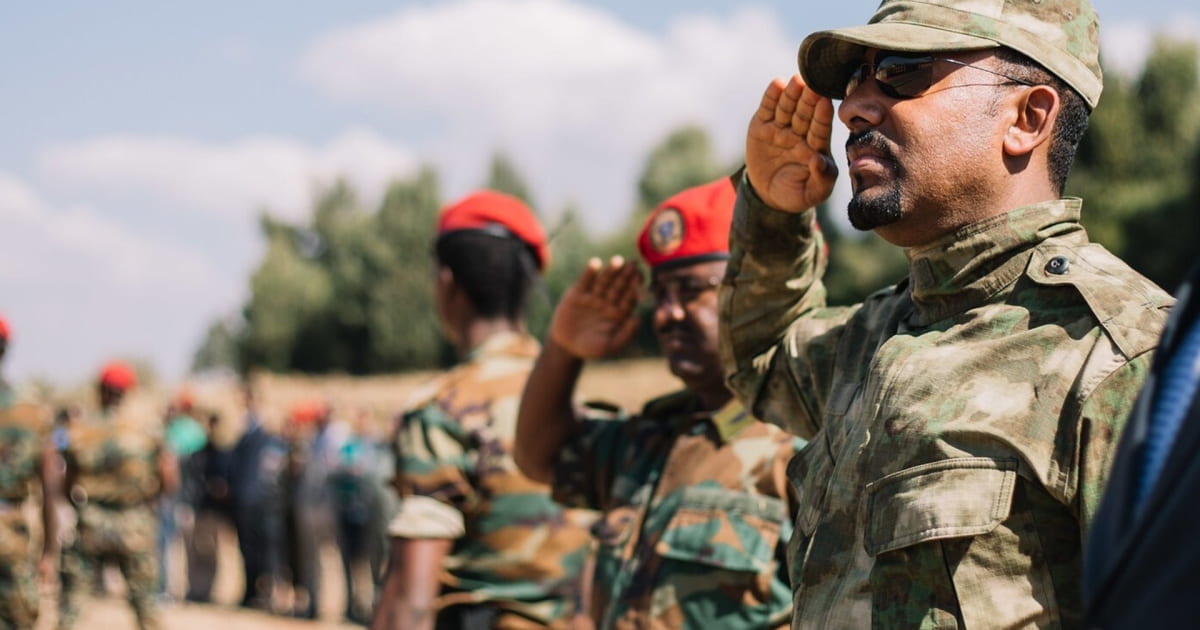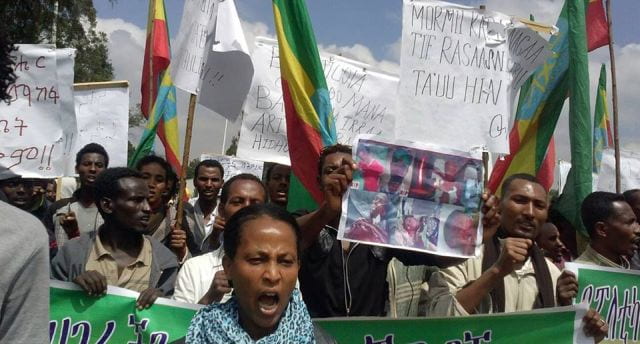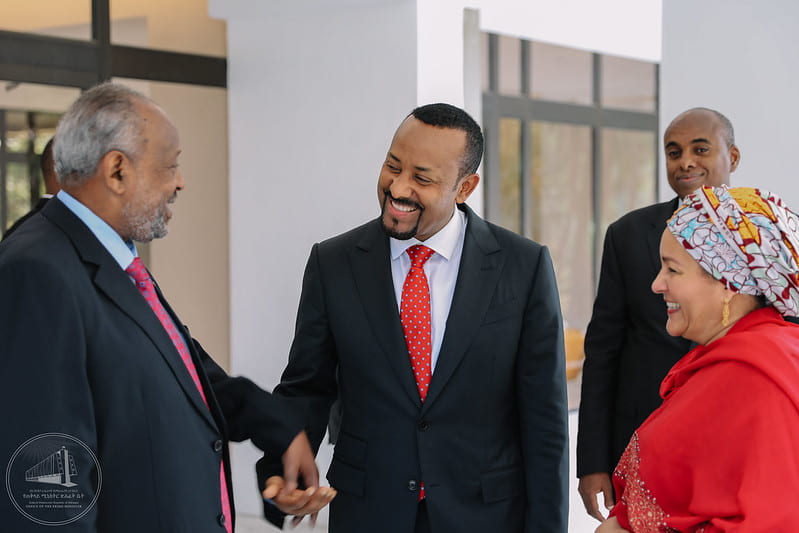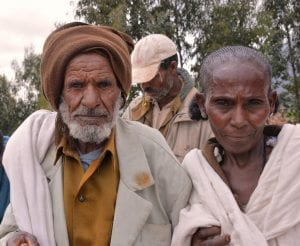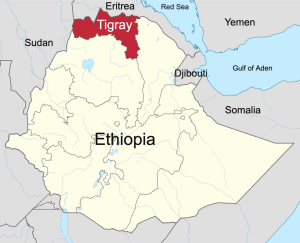
Like many other nations in Africa, Ethiopia has had a long and storied history. Known as one of the world’s oldest nations, Ethiopia first emerged as one of the world’s first Christian states, centered around the ancient kingdom of Aksum. As European powers began to colonize the interior of Africa in the 19th and early 20th centuries, Ethiopia thrust itself onto the world stage after a game-changing victory against colonial Italy during the 1896 Battle of Adwa. Ethiopia remained one of a very few African states to have never been extensively colonized, with Ethiopia’s monarchy only falling under the rule of fascist Italy briefly before being freed by the Allied Powers in World War II.
Ethiopia became a powerful advocate for the decolonization of Africa following the end of the Second World War. Haile Selassie I, who ruled as Ethiopian emperor from 1930 until his assassination in 1974, brought Ethiopia into both the League of Nations and the United Nations. He also made Addis Ababa the center of international cooperation in African politics with the establishment of the Organization for African Unity (now known as the African Union).
Despite Ethiopia once being regarded as a center of African progress and unity, great troubles have befallen this ancient nation. After the ancient monarchy ended with the assassination of Emperor Haile Selassie II and the establishment of a new military government, conflict began in the Ethiopian region of Tigray.
Beginning with the establishment of the Tigray People’s Liberation Front (TPLF), the region began a decades long conflict with Ethiopia’s new government in 1975. Tigray, which is located in Northern Ethiopia, has long supported a mostly agrarian population, with local peoples growing crops such as cereals, legumes, coffee, and cotton. The Tigray people, who make up about 10% of the population of modern-day Ethiopia and 50% of the population of Ethiopia’s northern neighbor Eritrea, are known to have descended from Semitic peoples, and today most ethnically Tigrayan people adhere to the Ethiopian Orthodox Tewahedo (Coptic) Church, which is headquartered in Addis Ababa. Despite numerous cultural and religious similarities between the Tigray people and the Oromo and Amhara ethnic groups (which account for about 60% of Ethiopia’s total population when combined), linguistic differences and political rivalry have been the cause of multiple conflicts between the Tigray people and the central Ethiopian government, including the war that began in November of 2020.
An Overview of the War in Tigray
In November 2020, the Ethiopian central government, under the leadership of Prime Minister Abiy Ahmed, began a campaign against the TPLF, which had retreated back to the region of Tigray after being ousted by Ahmed’s new government despite Ahmed’s former ties with the party. Despite the Ethiopian government’s stated mission “to arrest the political and military leadership of the ousted regional government in what it still refers to as a law enforcement operation“, civilian structures in Tigray communities such as hospitals, schools, factories, and businesses have been ravaged by the conflict. Reports from among the ethnic Amhara elite in Ethiopia have found that many view the conflict as a war of expansion, and Amhara militia and special forces have been “pivotal” in aiding Ahmed’s war campaign. Because of Tigray’s history as an agrarian powerhouse for Ethiopia, despite possessing little arable land and sparse vegetation, many experts have pointed out that the war in Tigray seems to be over “access to and control of land“, and as the region of Tigray has been cultivated for millennia, it is a prime target for control by the new ruling elite of Ethiopia.
Before the military campaign began, tensions began to rise between Tigray and the Ethiopian government as Ahmed postponed regional parliamentary elections due to the ongoing COVID-19 pandemic. In defiance of the central government, Tigray held elections in September 2020, and these elections were quickly deemed illegitimate by the federal government. Early in November, it was reported that TPLF forces attempted to steal weapons from a federal military base in Tigray, and the conflict began hours later after a declaration from Prime Minister Ahmed. Despite the government’s reports, the TPLF declared that the preemptive strike was necessary, as special forces had arrived just days before in preparation of an assault on the TPLF.
Swift action was taken against the TPLF, despite the presence of ethnically Tigray officers within the Ethiopian military, causing several instances of in-fighting between rival units. Phone and internet communication within the region was restricted, and the Federal Council of Ministers declared a six month state of emergency within Tigray that took effect on November 4, 2020.
As the conflict continues to rage, human rights accusations against Ahmed’s government swirl. Several reports have found that special forces within Tigray have committed multiple attacks against civilians. Devastation reached all parts of the Tigray region, and it has been reported that as of December 2021, up to 400,000 people within Tigray may be living in “famine-like” conditions, despite a unilateral ceasefire from the Ethiopian government that was issued on June 28, 2021. A report from the United Nations’ Office of the High Commissioner found large amounts of human rights abuses occurring in Tigray between October 2020 and June 2021, including “extrajudicial killings, torture, pillaging, sexual and gender-based violence, and the forcible displacement of civilians.” The war in Tigray has left up to “nine in ten people” in the region needing humanitarian assistance, and over two million people have been displaced by the conflict. Thousands of refugees from the region have ended up in Sudan, worsening the water crisis that is beginning to happen in the region.
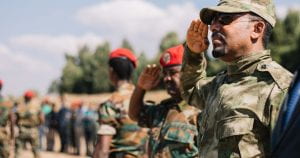
Potential Solutions
Following a special session of the United Nations that was called for by concerned parties in the European Union, The United Nations drafted a resolution on the conflict in Tigray and set up an international human rights probe into the conflict. Key aspects of the resolution include calls to all parties participating in the conflict to halt “direct attacks against civilians…including on the basis of their ethnicity or gender”. The draft also called for an end to attacks on civilian assets such as crops and livestock, and provided guidance to the Ethiopian government regarding ending the conflict within the region and providing transitional justice mechanisms, specifically for “accountability, reconciliation, and healing“. The Ethiopian government will be responsible for updating the UN Human Rights Council on the conflict’s progress during its 50th session, which will occur in June 2022.
Some human rights advocates have also called for Prime Minister Ahmed to be stripped of his 2019 Nobel Peace Prize, of which he was awarded for “his efforts to achieve peace and international cooperation, and in particular for his decisive initiative to resolve the border conflict with neighboring Eritrea.” Ahmed has taken a particularly active role in the conflict, making multiple appearances on the frontlines as battlefield commander, and has also been accused of using the peace deal he brokered with Eritrea in order to more successfully subdue Tigray.
As the conflict continuing to violate human rights within Tigray, human rights watchers are hopeful that the United Nations may be able to produce a peaceful resolution to the conflict within Tigray. With the Ethiopian report due in June, there may be hope for a brighter future within the region.
